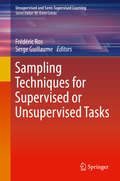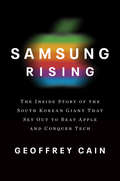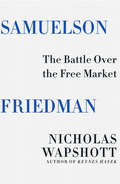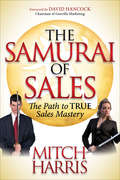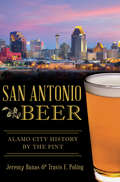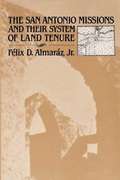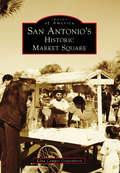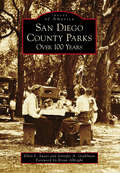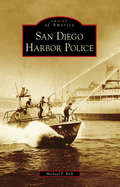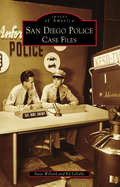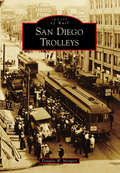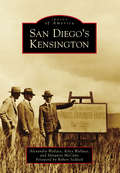- Table View
- List View
Sampa Video, Inc.
by Gregor AndradeA video rental store is considering offering home delivery service. Management must value the project under different financing strategies and methods, specifically adjusted present value (APV) and weighted average cost of capital (WACC).
Sampark Foundation: Transforming Primary Education in India
by V. Kasturi Rangan Shweta BagaiFounders Vineet and Anupama Nayar had rapidly scaled their foundation to reach 3 million primary school children (grades 1 to 3) in two states with math and English programs. Their goal was to reach 10 million children by 2025 and completely spend down the $100 million foundation corpus. A new opportunity presented itself in a third state with a potential to add another 4 million children. In grappling with this new opportunity they had to make certain strategic decisions on whether to go deeper (expand to grades 4 and 5) or go broader to more grade 1 to 3 children. They were wrestling with the question of which option would lead to more impact and leave their social innovation in a sustainable position after their exit.
Sample6: Partnering to Make Food Safer
by Robert F. Higgins Kirsten KesterTim Curran, CEO of Sample6, a start-up biotechnology company developing a novel food safety diagnostics platform, must decide how to partner with food industry players. How can he best convince leaders in this mature industry to adopt a new technology and improve food safety? Additionally, he faces a number of questions related to product development, marketing, regulatory compliance, and dynamic industry trends. This case provides an overview of food safety in the United States, and focuses on the strategic goal of transforming food safety from a "necessary evil" to a brand-enhancing differentiator.
Sampling and Statistical Inference
by Arthur Schleifer Jr.An introduction to sampling and statistical inference that covers the main concepts (confidence intervals, tests of statistical significance, choice of sample size) that are needed in making inferences about a population mean or percent. Includes discussion of problems of sampling in the real world where response bias and nonrepresentativeness violate the principles on which statistical inference is based.
Sampling Techniques for Supervised or Unsupervised Tasks (Unsupervised and Semi-Supervised Learning)
by Frédéric Ros Serge GuillaumeThis book describes in detail sampling techniques that can be used for unsupervised and supervised cases, with a focus on sampling techniques for machine learning algorithms. It covers theory and models of sampling methods for managing scalability and the “curse of dimensionality”, their implementations, evaluations, and applications. A large part of the book is dedicated to database comprising standard feature vectors, and a special section is reserved to the handling of more complex objects and dynamic scenarios. The book is ideal for anyone teaching or learning pattern recognition and interesting teaching or learning pattern recognition and is interested in the big data challenge. It provides an accessible introduction to the field and discusses the state of the art concerning sampling techniques for supervised and unsupervised task.Provides a comprehensive description of sampling techniques for unsupervised and supervised tasks;Describe implementation and evaluation of algorithms that simultaneously manage scalable problems and curse of dimensionality;Addresses the role of sampling in dynamic scenarios, sampling when dealing with complex objects, and new challenges arising from big data. "This book represents a timely collection of state-of-the art research of sampling techniques, suitable for anyone who wants to become more familiar with these helpful techniques for tackling the big data challenge."M. Emre Celebi, Ph.D., Professor and Chair, Department of Computer Science, University of Central Arkansas"In science the difficulty is not to have ideas, but it is to make them work" From Carlo Rovelli
Sampling Theory and Practice (ICSA Book Series in Statistics)
by Changbao Wu Mary E. ThompsonThe three parts of this book on survey methodology combine an introduction to basic sampling theory, engaging presentation of topics that reflect current research trends, and informed discussion of the problems commonly encountered in survey practice. These related aspects of survey methodology rarely appear together under a single connected roof, making this book a unique combination of materials for teaching, research and practice in survey sampling. Basic knowledge of probability theory and statistical inference is assumed, but no prior exposure to survey sampling is required. The first part focuses on the design-based approach to finite population sampling. It contains a rigorous coverage of basic sampling designs, related estimation theory, model-based prediction approach, and model-assisted estimation methods. The second part stems from original research conducted by the authors as well as important methodological advances in the field during the past three decades. Topics include calibration weighting methods, regression analysis and survey weighted estimating equation (EE) theory, longitudinal surveys and generalized estimating equations (GEE) analysis, variance estimation and resampling techniques, empirical likelihood methods for complex surveys, handling missing data and non-response, and Bayesian inference for survey data. The third part provides guidance and tools on practical aspects of large-scale surveys, such as training and quality control, frame construction, choices of survey designs, strategies for reducing non-response, and weight calculation. These procedures are illustrated through real-world surveys. Several specialized topics are also discussed in detail, including household surveys, telephone and web surveys, natural resource inventory surveys, adaptive and network surveys, dual-frame and multiple frame surveys, and analysis of non-probability survey samples. This book is a self-contained introduction to survey sampling that provides a strong theoretical base with coverage of current research trends and pragmatic guidance and tools for conducting surveys.
Samsung Electronics: TV in an Era of Convergence
by Karim R. Lakhani Marco Iansiti Kerry HermanFrom the late 1990s to 2006/2007, Samsung Electronics moved from one of 170 TV manufacturers to gain dominant TV market share year over year from 2007-2013. As digital technologies increasingly converged in 2013-2014, the industry faced new questions: What was the future of TV? The case considers Samsung Electronics TV Group's product development processes, as the company's mobile and TV offerings increasingly converged and consumer demands and behavior pushed the historically clear boundaries of product, content, engagement and interaction.
Samsung Electronics
by Jordan Siegel James Jinho ChangWhen is it possible to create a dual advantage of being both low cost and differentiated? In this case, students assess whether Samsung Electronics has been able to achieve such a dual advantage, and if so, how this was possible. Moreover, Samsung Electronics' long-held competitive advantage is under renewed attack. Students also can assess how Samsung should respond to large-scale Chinese entry into its industry.
Samsung Electronics Co.: Global Marketing Operations
by Anna Harrington John A. QuelchSamsung's global marketing director is assessing how to build the global brand reputation of the company further and upgrade the company's worldwide brand image. To show how to build a global brand.
Samsung Rising: The Inside Story of the South Korean Giant That Set Out to Beat Apple and Conquer Tech
by Geoffrey CainAn explosive exposé of one of the biggest and most secretive companies in the world, Samsung, as the Korean juggernaut battles Apple and Sony to dominate the world of technology Based on years of reporting on Samsung for The Economist, The Wall Street Journal, and Time, from his base in South Korea, and his countless sources inside and outside the company, Geoffrey Cain offers a penetrating look behind the curtains of the biggest company nobody in America knows. Seen for decades in tech circles as a fast follower rather than an innovation leader, Samsung today has grown to become a market leader in the United States and around the globe. They have captured one quarter of the smartphone market and have been pushing the envelope on every front. Forty years ago, Samsung was a rickety Korean agricultural conglomerate that produced sugar, paper, and fertilizer, located in a backward country with a third-world economy. With the rise of the PC revolution, though, Chairman Lee Byung-chul began a bold experiment: to make Samsung a major supplier of computer chips. The multimillion- dollar plan was incredibly risky. But Lee, wowed by a young Steve Jobs, who sat down with the chairman to offer his advice, became obsessed with creating a tech empire. And in Samsung Rising, we follow Samsung behind the scenes as the company fights its way to the top of tech. It is one of Apple&’s chief suppliers of technology critical to the iPhone, and its own Galaxy phone outsells the iPhone. Today, Samsung employs over 300,000 people (compared to Apple&’s 80,000 and Google&’s 48,000). The company&’s revenues have grown more than forty times from that of 1987 and make up more than 20 percent of South Korea&’s exports. Yet their disastrous recall of the Galaxy Note 7, with numerous reports of phones spontaneously bursting into flames, reveals the dangers of the company&’s headlong attempt to overtake Apple at any cost. A sweeping insider account, Samsung Rising shows how a determined and fearless Asian competitor has become a force to be reckoned with.
Samuel Allston
by Thomas J. Delong Leslie A. PerlowPresents profiles written by six members of the HBS Class of 1976 from the 10th and 20th reunions. The six alumni represent a cross section of the class of 1976 and provide a snapshot of life at the time of the reunions.
Samuel Colt: An American Gun Maker
by Casey Verkamp Tom NicholasSamuel Colt not only perfected and patented the technology for a gun that could fire multiple times without reloading, but he also developed and applied early principles of mass production more completely than anyone had done before. Until the nineteenth century, weapons manufacture, like most industries, had been the exclusive domain of skilled craftsmen, whose families had typically been in the trade for generations. Colt substituted specialized machines that made parts to exact specifications, which could fit into almost any gun of the same type. This made replacement and repair significantly easier and production more uniform. Other industries and countries would later implement these principles of production from Colt's armory, thereby revolutionizing manufacturing. Also, through his personality, product, and marketing, Colt's guns became intertwined with American identity in a tangle that persists to the present.
Samuel Pufendorf and the Emergence of Economics as a Social Science (The European Heritage in Economics and the Social Sciences #23)
by Günther Chaloupek Hans A. Frambach Jurgen G. BackhausThis book discusses Samuel Pufendorf and his contributions to the development of the European Enlightenment and the emergence of economics as a social science. Born in 1632 in Saxony, Pufendorf wrote widely on natural law, ethics, jurisprudence, and political economy and was one of the most important figures in early-modern political thought. Although his work fits within the intellectual framework of natural jurisprudence, there is an argument to be made that his ideas promoted the development of economics as a distinct discipline within the social sciences. Written by participants in the 34th Heilbronn Symposion in Economics and the Social Sciences, the contributions to this volume give an overview of Pufendorf’s influence on other authors of the Enlightenment, such as Locke, Montesquieu, and Rousseau, as well as addressing the theoretical implications of his extensive writings. Further chapters place a special focus on Pufendorf’s discussion of economic matters, such as property rights theory, price theory, taxation, and preferences and decision-making. The book concludes with analyzing Pufendorf’s influence on Adam Smith, his anticipations of elements of modern economic theory, and his impact on the history of economic thought. Providing a fresh look at one of the foundational scholars of social science, this volume will be of interest to researchers and students of the history of economic thought, political economy, economic history, and political philosophy.
Samuel Slater & Francis Cabot Lowell: The Factory System in U.S. Cotton Manufacturing
by Tom Nicholas Matthew GuilfordCase
Samuelson Friedman: The Battle Over The Free Market
by Nicholas WapshottFrom the author of Keynes Hayek, the next great duel in the history of economics. In 1966 two columnists joined Newsweek magazine. Their assignment: debate the world of business and economics. Paul Samuelson was a towering figure in Keynesian economics, which supported the management of the economy along lines prescribed by John Maynard Keynes’s General Theory. Milton Friedman, little known at that time outside of conservative academic circles, championed “monetarism” and insisted the Federal Reserve maintain tight control over the amount of money circulating in the economy. In Samuelson Friedman, author and journalist Nicholas Wapshott brings narrative verve and puckish charm to the story of these two giants of modern economics, their braided lives and colossal intellectual battles. Samuelson, a forbidding technical genius, grew up a child of relative privilege and went on to revolutionize macroeconomics. He wrote the best-selling economics textbook of all time, famously remarking "I don’t care who writes a nation’s laws—or crafts its advanced treatises—if I can write its economics textbooks." His friend and adversary for decades, Milton Friedman, studied the Great Depression and with Anna Schwartz wrote the seminal books The Great Contraction and A Monetary History of the United States. Like Friedrich Hayek before him, Friedman found fortune writing a treatise, Capitalism and Freedom, that yoked free markets and libertarian politics in a potent argument that remains a lodestar for economic conservatives today. In Wapshott’s nimble hands, Samuelson and Friedman’s decades-long argument over how—or whether—to manage the economy becomes a window onto one of the longest periods of economic turmoil in the United States. As the soaring economy of the 1950s gave way to decades stalked by declining prosperity and "stagflation," it was a time when the theory and practice of economics became the preoccupation of politicians and the focus of national debate. It is an argument that continues today.
The Samurai of Sales: The Path to True Sales Mastery
by Mitch HarrisThe goal of The Samurai of Sales is to give the reader an arsenal of real life selling skills that he can use to generate massive sales and consistently outperform the competition, while cultivating the realization that when done properly, being in professional sales is one of the most amazing privileges on the planet.
San Antonio Beer: Alamo City History by the Pint (American Palate)
by Travis E. Poling Jeremy BanasBrewing history and beer culture permeate San Antonio. The Menger Hotel and its bar notoriously frequented by Teddy Roosevelt and his Rough Riders began as the city's first brewery in 1855. The establishment of San Antonio Brewing Association and Lone Star Brewery at the close of the nineteenth century began the city's golden age of brewing. Decades later, the Volstead Act decimated the city's brewing community. Only one brewery survived Prohibition. Those that bounced back were run out of business by imports coming in on the new railroad. The 1990s saw a craft comeback with the opening of the oldest existing brewpub, Blue Star Brewing Company. Today, San Antonio boasts a bevy of new breweries and celebrates its brewing heritage. Grab a pint and join authors Jeremy Banas and Travis E. Poling for a taste of Alamo City's hoppy history.
The San Antonio Missions and Their System of Land Tenure
by Félix D. Almaráz Jr.San Antonio, Texas, is unique among North American cities in having five former Spanish missions: San Antonio de Valero (The Alamo; founded in 1718), San José y San Miguel de Aguayo (1720), Nuestra Señora de la Purísima Concepción de Acuña (1731), San Juan Capistrano (1731), and San Francisco de la Espada (1731). These missions attract a good deal of popular interest but, until this book, they had received surprisingly little scholarly study. The San Antonio Missions and Their System of Land Tenure, a winner in the Presidio La Bahía Award competition, looks at one previously unexamined aspect of mission history--the changes in landownership as the missions passed from sacred to secular owners in the late eighteenth and early nineteenth centuries. Drawing on exhaustive research in San Antonio and Bexar County archives, Félix Almaráz has reconstructed the land tenure system that began with the Spaniards' jurisprudential right of discovery and progressed through colonial development, culminating with ownership of the mission properties under successive civic jurisdictions (independent Mexico, Republic of Texas, State of Texas, Bexar County, and City of San Antonio). Several broad questions served as focus points for the research. What were the legal bases for the Franciscan missions as instruments of the Spanish Empire? What was the extent of the initial land grants at the time of their establishment in the eighteenth century? How were the missions' agricultural and pastoral lands configured? And, finally, what impact has urbanization had upon the former Franciscan foundations? The findings in this study will be valuable for scholars of Texas borderlands and Hispanic New World history. Additionally, genealogists and people with roots in the San Antonio missions area may find useful clues to family history in this extensive study of landownership along the banks of the Río San Antonio. San Antonio, Texas, is unique among North American cities in having five former Spanish missions: San Antonio de Valero (The Alamo; founded in 1718), San José y San Miguel de Aguayo (1720), Nuestra Señora de la Purísima Concepción de Acuña (1731), San Juan Capistrano (1731), and San Francisco de la Espada (1731). These missions attract a good deal of popular interest but, until this book, they had received surprisingly little scholarly study. The San Antonio Missions and Their System of Land Tenure, a winner in the Presidio La Bahía Award competition, looks at one previously unexamined aspect of mission history--the changes in landownership as the missions passed from sacred to secular owners in the late eighteenth and early nineteenth centuries. Drawing on exhaustive research in San Antonio and Bexar County archives, Félix Almaráz has reconstructed the land tenure system that began with the Spaniards' jurisprudential right of discovery and progressed through colonial development, culminating with ownership of the mission properties under successive civic jurisdictions (independent Mexico, Republic of Texas, State of Texas, Bexar County, and City of San Antonio). Several broad questions served as focus points for the research. What were the legal bases for the Franciscan missions as instruments of the Spanish Empire? What was the extent of the initial land grants at the time of their establishment in the eighteenth century? How were the missions' agricultural and pastoral lands configured? And, finally, what impact has urbanization had upon the former Franciscan foundations? The findings in this study will be valuable for scholars of Texas borderlands and Hispanic New World history. Additionally, genealogists and people with roots in the San Antonio missions area may find useful clues to family history in this extensive study of landownership along the banks of the Río San Antonio.
San Antonio's Historic Market Square (Images of America)
by Edna Campos GravenhorstSan Antonio was founded in 1718. By 1730, the viceroy of New Spain had issued orders to map plazas, squares, and parks for the Canary Islanders who would be arriving in 1731. The plazas with their markets became the centers for business and entertainment. The first square was Plaza de Armas (Military Plaza); when the islanders arrived, they marked off the Plaza de las Islas (Main Plaza). Before the Civil War, Alamo Plaza was the center of commerce. As San Antonio grew, the markets needed to relocate. The construction of Municipal Market began in 1899. This market house, built in Paschal Square, was demolished in the 1930s, but the Municipal Market Annex, constructed in the 1920s, survived. The annex buildings would become El Mercado and Centro de Artes. In the 1970s, a permanent building for the farmers market was built in Hay Market Plaza. Today, these buildings, along with the historic buildings in the area, are known as Market Square.
San Diego County Parks: Over 100 Years (Images of America)
by Brian Albright Ellen L. Sweet Jennifer A. GrahlmanFrom its earliest park in 1913, the County of San Diego has more than 100 years of serving the public with unique park and recreational experiences while preserving significant natural and cultural resources. Officially, the San Diego County Board of Supervisors established the Department of Recreation in 1946. Today, the department manages over 50,000 acres of parks, campgrounds, trails, recreation centers, sports complexes, and ecological and open-space preserves. The county covers an area that includes coastline, mountains, deserts, lakes, lagoons, and other habitats�it is the nation�s most biologically diverse county�and the department�s properties mirror this biodiversity. They also contain sites that reveal the county�s history: Mexican-era ranchos, an overland stage station, remnants of an early gristmill, Victorian mansions, traces of flume systems, Depression-era construction projects, an 1887 boathouse, and parks that reflect the advent of early automobile tourism.
San Diego Harbor Police (Images of America)
by Michael P. RichThe San Diego Harbor Police Department has proudly provided more than 50 years of law enforcement. From its humble beginnings as a small security force formed after World War II to protect San Diego imports to the modern and sophisticated police force it is today, the San Diego Harbor Police Department serves as a shining example of the exciting and important role law enforcement plays in the development of a busy 21st-century city. Through a stunning collection of never-before-seen photographs, this book tells the story of the officers who have served and protected one of America's most historic and vital harbors. History lovers, police aficionados, and San Diego locals and visitors will be fascinated by the photographs within, which document the department's history from 1934 through its 1962 transition into the San Diego Unified Port District of today.
San Diego Police: Case Files (Images of America)
by Ed Lavalle Steve WillardA Pacific Coast metropolis famous for beautiful beaches and perfect weather and an American municipality since 1850, San Diego is America's eighth-largest city. Known as America's "Finest City," it contains a wealth of history--evolutionary as well as revolutionary--in its crime files. Among those are the founder of the California wine industry, Judge Roy Bean, a black officer before the Emancipation Proclamation, a 19th-century Native American police chief, and women who had the power to arrest before they had the right to vote. Major incidents include massive floods, civil unrest, wildfires, and some of the largest police gun battles in history. San Diego also witnessed mass murder, America's first major school shooting, the worst aviation disaster in American history, and the deadliest streets, per capita, to police. How the San Diego Police Department (SDPD) handled it all became textbook for many other police agencies.
San Diego Trolleys (Images of Rail)
by Douglas W. MengersStarting with the first horse-drawn trolleys introduced by the San Diego Streetcar Company in 1886, San Diego’s history included the growth and decline of several trolley systems. After electricity arrived, San Diego was the site of early experimentation for electric trolleys on the West Coast and home to a short-lived cable car system. In the 1890s, sugar baron John D. Spreckels purchased these failed lines and consolidated them into the San Diego Electric Railway. This railway expanded rapidly, leading to the development of new trolley suburbs at the turn of the century, including North Park, Normal Heights, and Mission Beach. Ridership waned with the Depression and the introduction of autobuses, and though it temporarily rose during the war years, this decline led to the dismantling of the trolley system in April 1949.
San Diego's Kensington (Images of America)
by Margaret Mccann Kiley Wallace Alexandra Wallace Robert SedlockThe mid-city San Diego neighborhood of Kensington was conceived as a streetcar suburb. Composed of several subdivisions, the first was Kensington Park, mapped on April 8, 1910. The principals involved in developing Kensington were also involved in creating the 1915 Panama-California Exposition in Balboa Park, and it was hoped that the throngs attracted to the exhibition would find Kensington to be a perfect place to build a home. The development of Kensington Manor, Kensington Heights, Talmadge Park, and adjacent subdivisions would bring Spanish-style houses, tree-lined streets, and a commercial core. Prominent people such as Judge Joseph Rutherford, Sarah Fitzpatrick Harden, G. Aubrey Davidson, two former Mexican presidents, and numerous politicians made Kensington their home. Ideal location, well-preserved architecture, and the small-town sensibilities of longtime residents combine to make Kensington a unique and desirable place.

